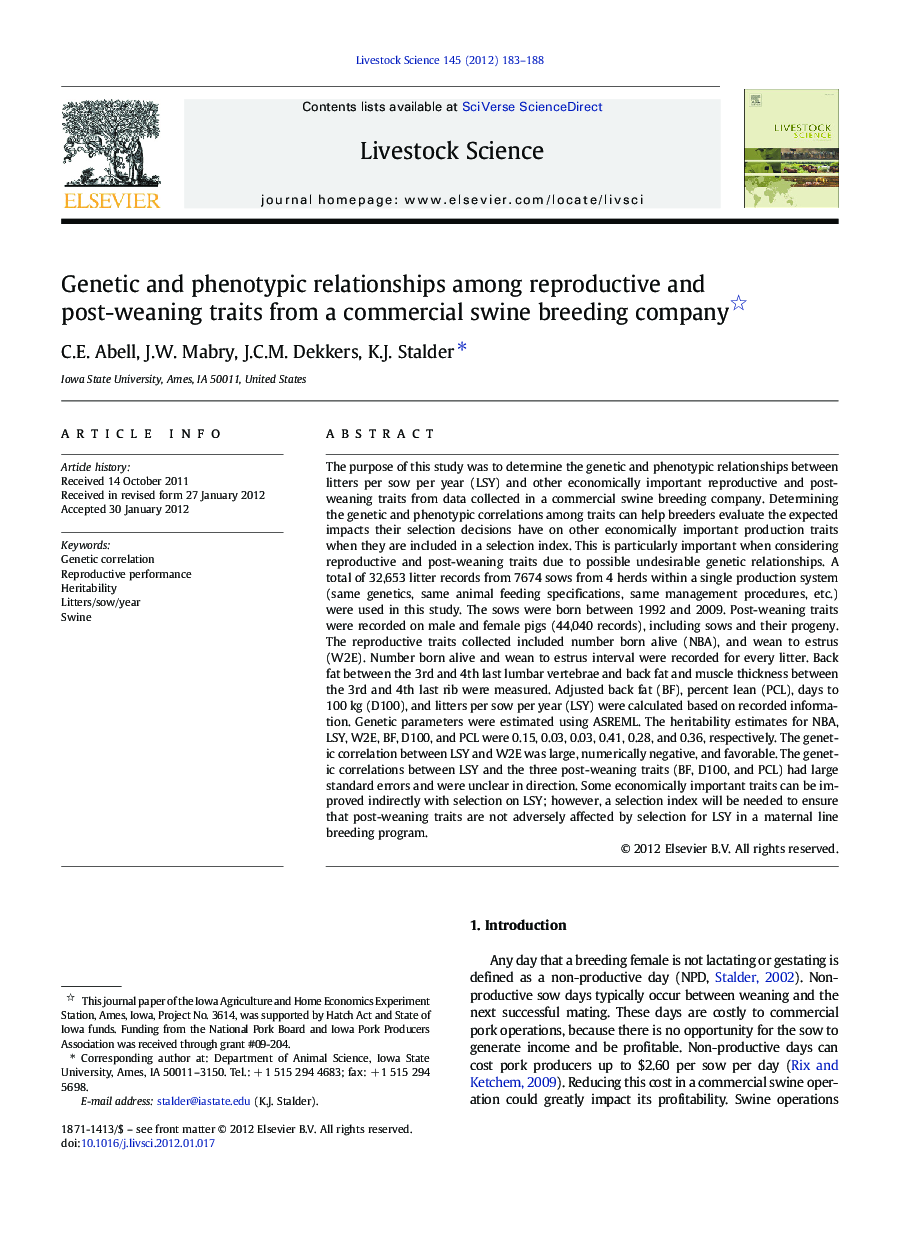| Article ID | Journal | Published Year | Pages | File Type |
|---|---|---|---|---|
| 5790578 | Livestock Science | 2012 | 6 Pages |
Abstract
The purpose of this study was to determine the genetic and phenotypic relationships between litters per sow per year (LSY) and other economically important reproductive and post-weaning traits from data collected in a commercial swine breeding company. Determining the genetic and phenotypic correlations among traits can help breeders evaluate the expected impacts their selection decisions have on other economically important production traits when they are included in a selection index. This is particularly important when considering reproductive and post-weaning traits due to possible undesirable genetic relationships. A total of 32,653 litter records from 7674 sows from 4 herds within a single production system (same genetics, same animal feeding specifications, same management procedures, etc.) were used in this study. The sows were born between 1992 and 2009. Post-weaning traits were recorded on male and female pigs (44,040 records), including sows and their progeny. The reproductive traits collected included number born alive (NBA), and wean to estrus (W2E). Number born alive and wean to estrus interval were recorded for every litter. Back fat between the 3rd and 4th last lumbar vertebrae and back fat and muscle thickness between the 3rd and 4th last rib were measured. Adjusted back fat (BF), percent lean (PCL), days to 100Â kg (D100), and litters per sow per year (LSY) were calculated based on recorded information. Genetic parameters were estimated using ASREML. The heritability estimates for NBA, LSY, W2E, BF, D100, and PCL were 0.15, 0.03, 0.03, 0.41, 0.28, and 0.36, respectively. The genetic correlation between LSY and W2E was large, numerically negative, and favorable. The genetic correlations between LSY and the three post-weaning traits (BF, D100, and PCL) had large standard errors and were unclear in direction. Some economically important traits can be improved indirectly with selection on LSY; however, a selection index will be needed to ensure that post-weaning traits are not adversely affected by selection for LSY in a maternal line breeding program.
Related Topics
Life Sciences
Agricultural and Biological Sciences
Animal Science and Zoology
Authors
C.E. Abell, J.W. Mabry, J.C.M. Dekkers, K.J. Stalder,
